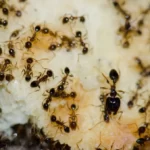Hostas, with their elegant foliage and adaptability to various garden settings, have earned their place as beloved perennials. Whether you’re a seasoned gardener or just starting your green journey, cultivating healthy hostas requires understanding their unique watering requirements. In this article, we’ll delve into the art of watering hostas to help you keep these leafy beauties thriving in your garden. From recognizing their moisture needs to factors influencing watering frequency, we’ll provide you with the knowledge you need to ensure your hostas remain lush and vibrant throughout the growing season. So, let’s embark on a journey to discover how often to water hostas and keep your garden flourishing.
- 6-12-6 All-In-One, All Natural Fertilizer
- Gentle Formula For Soil Or Foliar Application
- Prevents Salt And Chemical Buildup
- No Assembly Required
Hosta Watering Needs
To master the art of watering hostas, it’s essential to start with the basics. Hostas, known for their lush foliage and captivating varieties, thrive when their moisture needs are met. However, striking the right balance between providing adequate moisture and avoiding overwatering can be a challenge.
Factors Influencing Watering Frequency
To determine how often you should water your hostas, it’s crucial to consider various factors that influence their water requirements. These factors include:
- Weather Conditions: Hot and dry weather may necessitate more frequent watering, while cooler and rainy periods may require less.
- Soil Type: The type of soil in which your hostas are planted plays a significant role. Well-draining soil retains moisture more effectively than heavy, compacted soil.
- Location: Hostas in full sun or windy locations may dry out faster and require more frequent watering compared to those in partial shade.
- Hosta Variety: Some hosta varieties have thicker leaves and may be more drought-tolerant than others.
Understanding these factors will help you tailor your watering schedule to the specific needs of your hostas.
- Optimal Root Development: Our soilless mix encourages robust root systems, promoting strong and healthy plant growth from the start.
- Versatile Use: Suitable for various plant types, from house plants to other propagated varieties, making it a versatile addition to your gardening toolkit.
- Lightweight Composition: The blend’s lightweight nature ensures ease of use and handling during the delicate stages of plant propagation.
- Well-Aerated Environment: The mix provides excellent aeration, preventing issues related to waterlogging and supporting the development of vigorous roots.
- Hand-Blended Quality: Carefully crafted by hand, this planting mix is a testament to quality and precision, ensuring consistent results with each use.
Signs of Watering Needs
Recognizing when your hostas need water is key to maintaining their health. Look out for these signs that indicate your hostas are thirsty:
- Wilting Leaves: When hostas lack sufficient moisture, their leaves may wilt or droop.
- Dry Soil: Check the soil’s moisture level by inserting your finger about an inch into the ground near your hostas. If it feels dry at this depth, it’s time to water.
- Stress Symptoms: Hostas may display signs of stress, such as yellowing or browning leaves, even before wilting occurs.
By paying attention to these cues, you can ensure your hostas receive the hydration they need to flourish in your garden.
Watering Hostas in the Ground
Watering hostas planted in the ground requires a thoughtful approach to ensure they receive the right amount of moisture:
- Deep Watering: When you water hostas in the ground, aim to water deeply. Apply water at the base of the plants rather than overhead to prevent fungal issues.
- Frequency: Watering frequency will vary depending on factors like weather and soil type. As a general guideline, provide enough water to keep the soil consistently moist but not soggy. Allow the top inch of soil to dry out between waterings.
- Morning Watering: Water your hostas in the morning to allow any excess moisture on the foliage to dry during the day, reducing the risk of fungal diseases.
Adopting these practices will help your ground-planted hostas thrive and maintain their lush foliage.
- For best results, plant in USDA Zone:3-8 – Mature size: 24-30in H x 24-30in W
- Plant is delivered in a #1 Size Container. It is fully rooted in the soil and can be planted immediately upon arrival, weather permitting.
Watering Hostas in Containers
Hostas in containers have different watering needs than those in the ground and require special attention:
- Well-Draining Containers: Plant hostas in containers with good drainage to prevent waterlogged roots.
- Regular Monitoring: Container hostas should be checked for moisture more frequently. Stick your finger into the soil, and when the top inch feels dry, it’s time to water.
- Watering Technique: Water container hostas thoroughly until you see water draining from the pot’s bottom. Avoid letting them sit in standing water.
- Container Size: Choose an appropriately sized container to accommodate the hosta’s root system and reduce the need for frequent watering.
By following these container-specific guidelines, you can ensure that your potted hostas receive the right amount of moisture to thrive in their confined environment.
Avoiding Common Mistakes
To successfully care for your hostas, it’s important to steer clear of common watering mistakes that can harm these beautiful plants:
- Overwatering: Resist the temptation to overwater hostas, as soggy soil can lead to root rot and other moisture-related issues. Stick to a consistent watering schedule and adjust based on your hostas’ needs and environmental factors.
- Shallow Watering: Ensure that water reaches the deeper root zone of your hostas. Shallow watering can encourage surface roots and make your plants more susceptible to drying out.
- Watering in the Evening: Avoid watering hostas in the evening, as wet foliage during the night can promote fungal diseases. Morning watering is preferable.
- Using Hard Water: Hostas are sensitive to hard water and may develop brown leaf margins. If your tap water is hard, consider using rainwater or a water softener for irrigation.
By sidestepping these common mistakes, you’ll provide your hostas with the right amount of moisture without putting them at risk.
Mulching and Water Retention
Mulching around your hostas can be a valuable strategy for retaining soil moisture and maintaining consistent hydration:
- Mulch Selection: Choose organic mulch materials like compost, shredded leaves, or wood chips. Spread a 2-3 inch layer around the base of your hostas.
- Mulch Benefits: Mulch helps regulate soil temperature, reduce evaporation, and deter weeds. It also contributes organic matter to the soil over time.
- Mulch Placement: Be cautious not to mound mulch against the hosta stems, as this can create a moist environment that encourages rot. Leave a small gap around the base of the plant.
By incorporating mulch into your hosta care routine, you’ll create a more water-efficient environment that benefits the overall health of your plants.
- Mix of perennial, hosta plants with heart-shaped leaves
- Produce mildly fragrant white or purple flowers on tall stems
- Low-maintenance plant, perfect for all level gardeners
- Includes 6, 12 or 24 hosta bare roots, 24 pack includes planting shovel
- Shade-tolerant, ideal for boarders, trees and shady areas
Special Considerations
In some situations, hostas may require special attention when it comes to watering:
- Newly Planted Hostas: Newly planted hostas need consistent moisture to establish their root systems. Keep the soil evenly moist during their first growing season.
- Hot and Dry Climates: If you live in a region with hot, dry summers, consider providing extra water to keep hostas hydrated. Shade and mulch can also help protect them from excessive heat.
- Rain Barrels: Collecting rainwater in barrels is an eco-friendly way to ensure a supply of fresh, chlorine-free water for your hostas.
Understanding these special considerations will help you adapt your watering routine to meet the unique needs of your hostas in different circumstances.
Conclusion
Watering hostas is both a science and an art, and finding the right balance is essential for their health and vitality. By considering factors such as weather conditions, soil type, and location, you can determine how often to water your hostas effectively. Recognizing the signs of watering needs and avoiding common mistakes, like overwatering or shallow watering, will help you maintain healthy hostas with lush foliage.
Whether your hostas are in the ground or containers, mulching and using proper watering techniques are key to retaining moisture and ensuring your plants thrive. Remember to consider special situations like newly planted hostas or hot climates, and adjust your watering regimen accordingly.
With the knowledge and practices outlined in this guide, you’ll be better equipped to keep your hostas flourishing and create a garden filled with these captivating leafy wonders.








